
Patent management platform
Itransition delivered a blockchain-based patent management solution, automating complex monetization processes, bringing transparency to the IP market, and reducing transaction costs.
Table of contents
Context
The customer is a US-based company that has been operating on the global patent market for more than 10 years. Using the latest technologies, they seek to make it more transparent, efficient, and liquid. By providing advanced search tools and AI-based patent analytics, they help potential buyers to search for relevant offers and analyze portfolio quality, and patent holders to monetize their inventions.
In doing that, they discovered many inefficient areas that were limiting the opportunities of patent owners, including the following:
- Tracking ownership was expensive and ineffective. Because of the absence of the registry, companies had to have solid legal resources to sell patents.
- The value of patents was difficult to calculate.
- Patent owners needed to deal with multiple vendors across different venues, hire lawyers, etc.
To address these issues, the company requested the development of the world’s first blockchain-based patent platform that would connect patent buyers and sellers. The platform would become a one-stop-shop solution to buy, sell, license, and evaluate patents, while providing free patent analytics and engaging relevant service providers from around the world.
Considering our previous successful long-term collaboration and Itransition’s vast expertise in the intellectual property domain and blockchain development, the customer turned to us for project implementation.
Solution
We delivered a blockchain-based web application for searching, analyzing, selling, purchasing, and licensing patents. The solution comprises a marketplace and an administration panel, allowing patent owners to monetize their inventions, and users to evaluate and buy patents.
The Marketplace
It is the external part of the platform, which allows uploading patents for their subsequent verification, licensing patents, searching for patents and viewing their details, displaying current offers on sale, as well as creating, managing, and discussing patent portfolios.
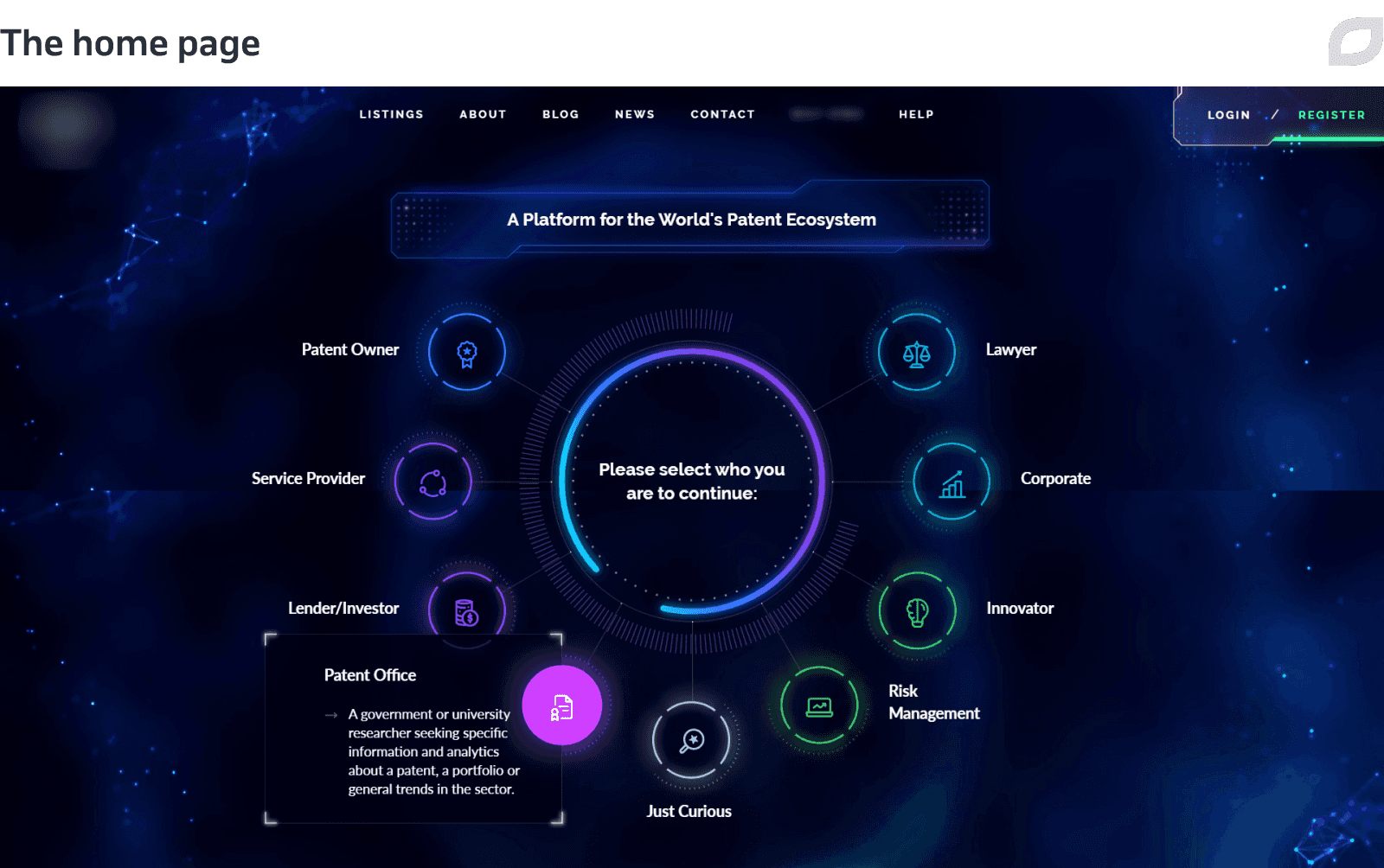
To enable communication between buyers and sellers, we implemented deal rooms. Applying the customer’s original AI model, we enabled search recommendations based on user behavior and automated the payment of patent maintenance fees to the patent office.
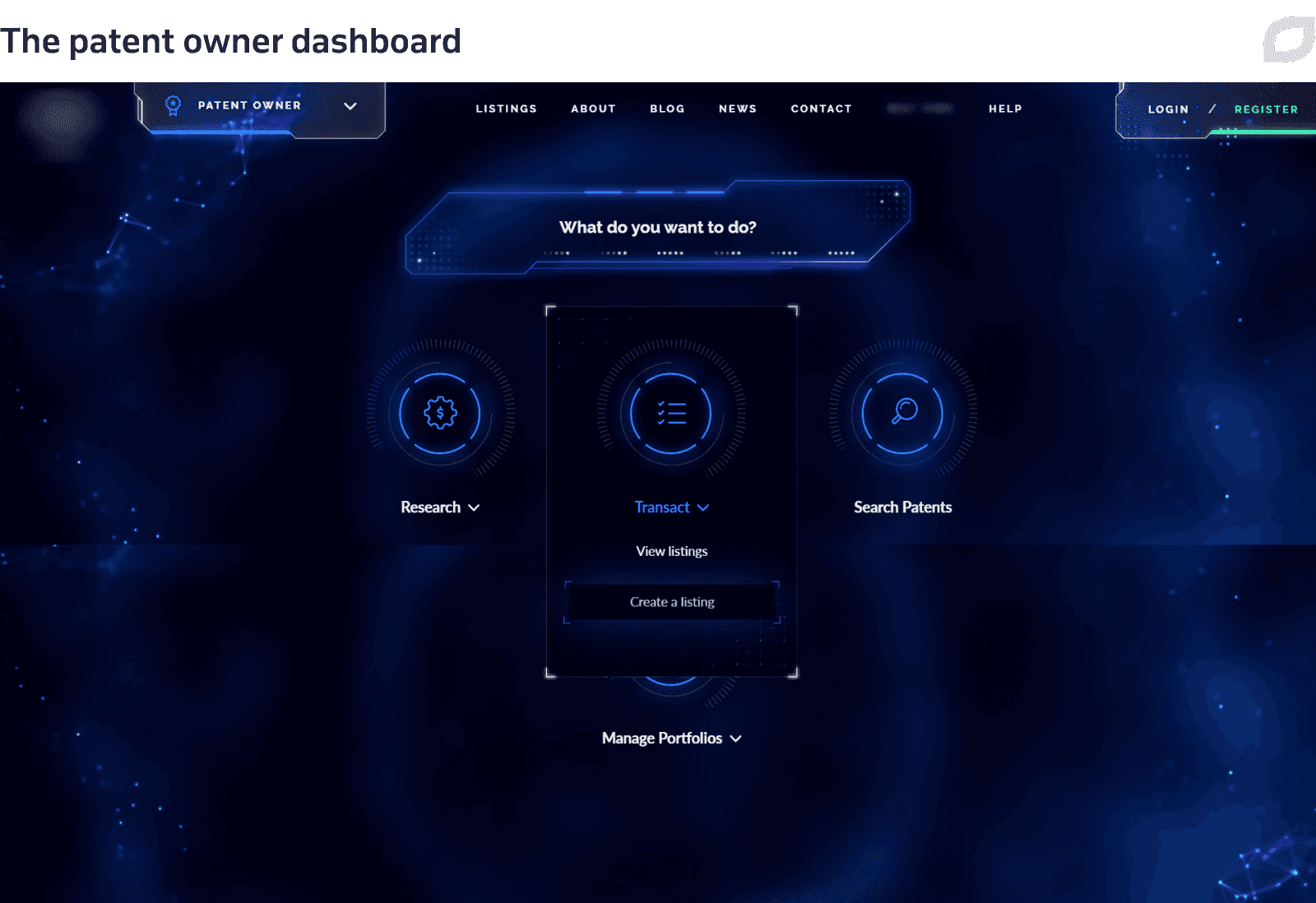
Users can create a portfolio by uploading a patent list or selecting patents from search results. They can highlight key patents and add custom fields in a portfolio, merge several portfolios, and create sub-portfolios.
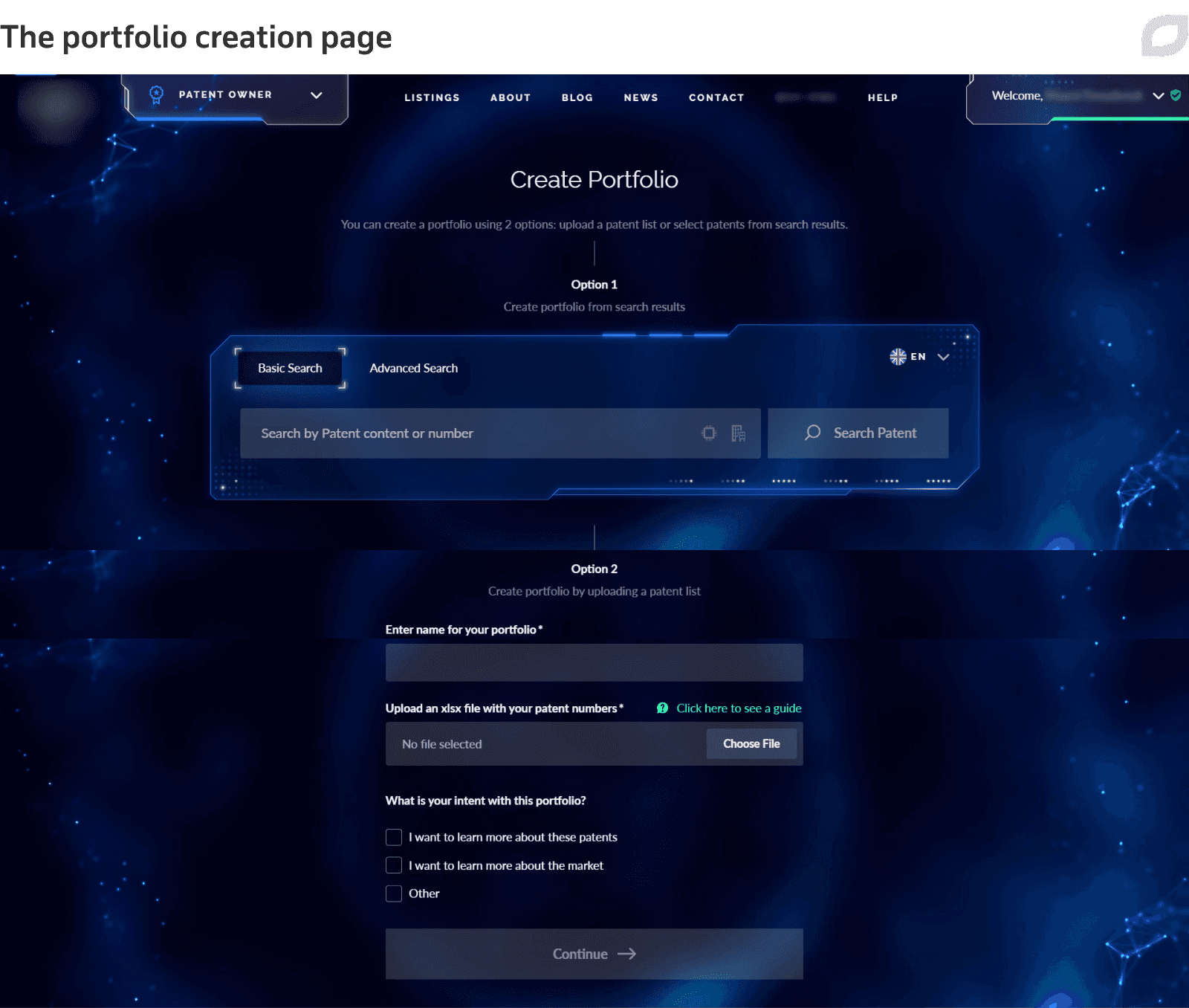
All portfolio owners can create a deal room so that they can negotiate their patent portfolios with other users. Deal room creators can view their deal rooms in any status, while non-creators can do this in Active and Negotiation statuses only.
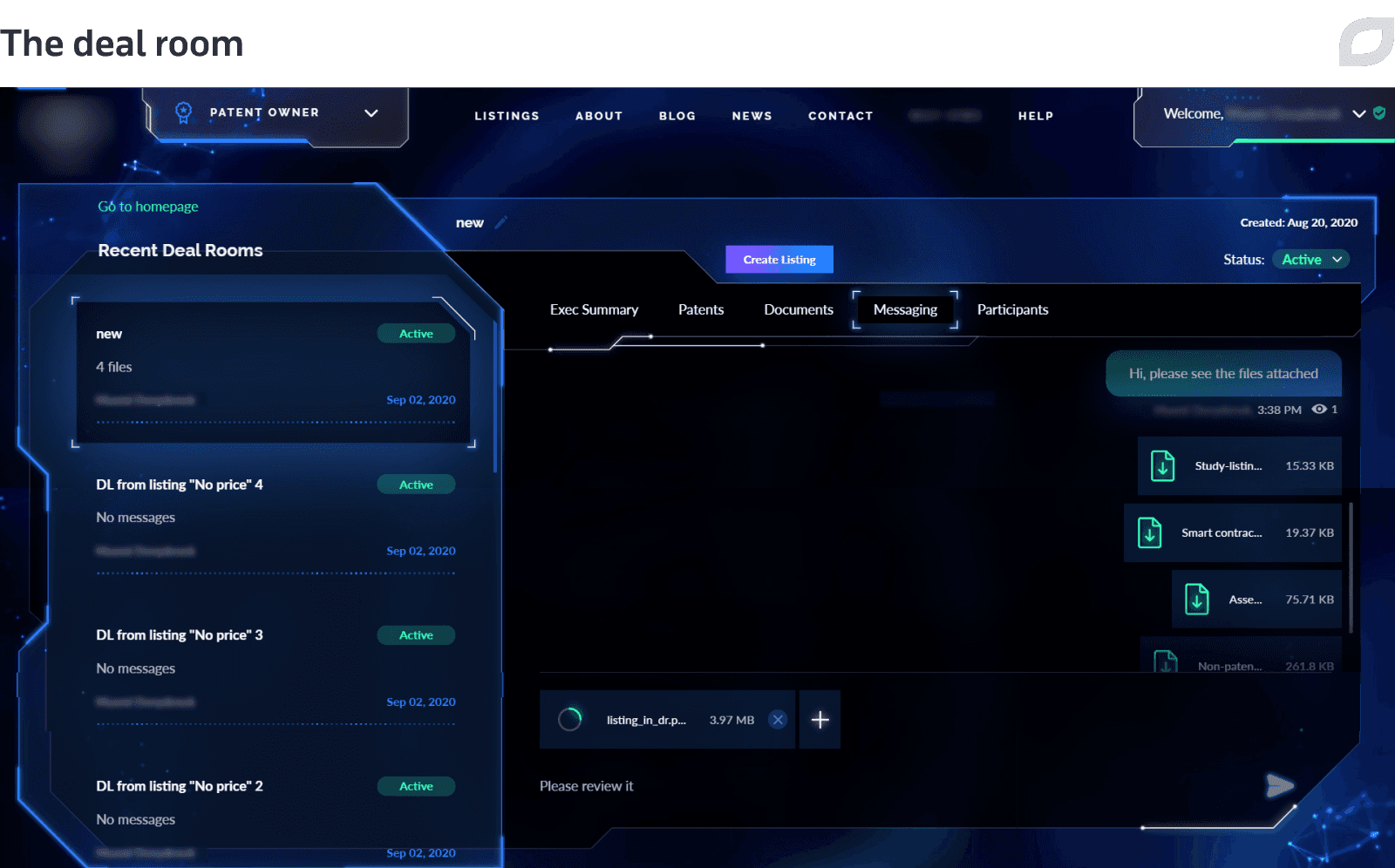
Deal room creators can:
- Invite, add, or remove participants from their deal room
- Send messages and files, and edit patents
- View the list of deal rooms, close their deal room to indicate that the discussion is over, and reopen a closed deal room to communicate again
- Create sale, license, public and private types of listings, and view them in the Listings tab
The built-in messenger service allows users to see all shared messages and files, even those shared before they entered the deal room. If an offer/transaction is attached to a deal room, the Listing tab with all patent and license offers will become available.
The Files tab allows users to download files and documents relevant to the corresponding portfolio.
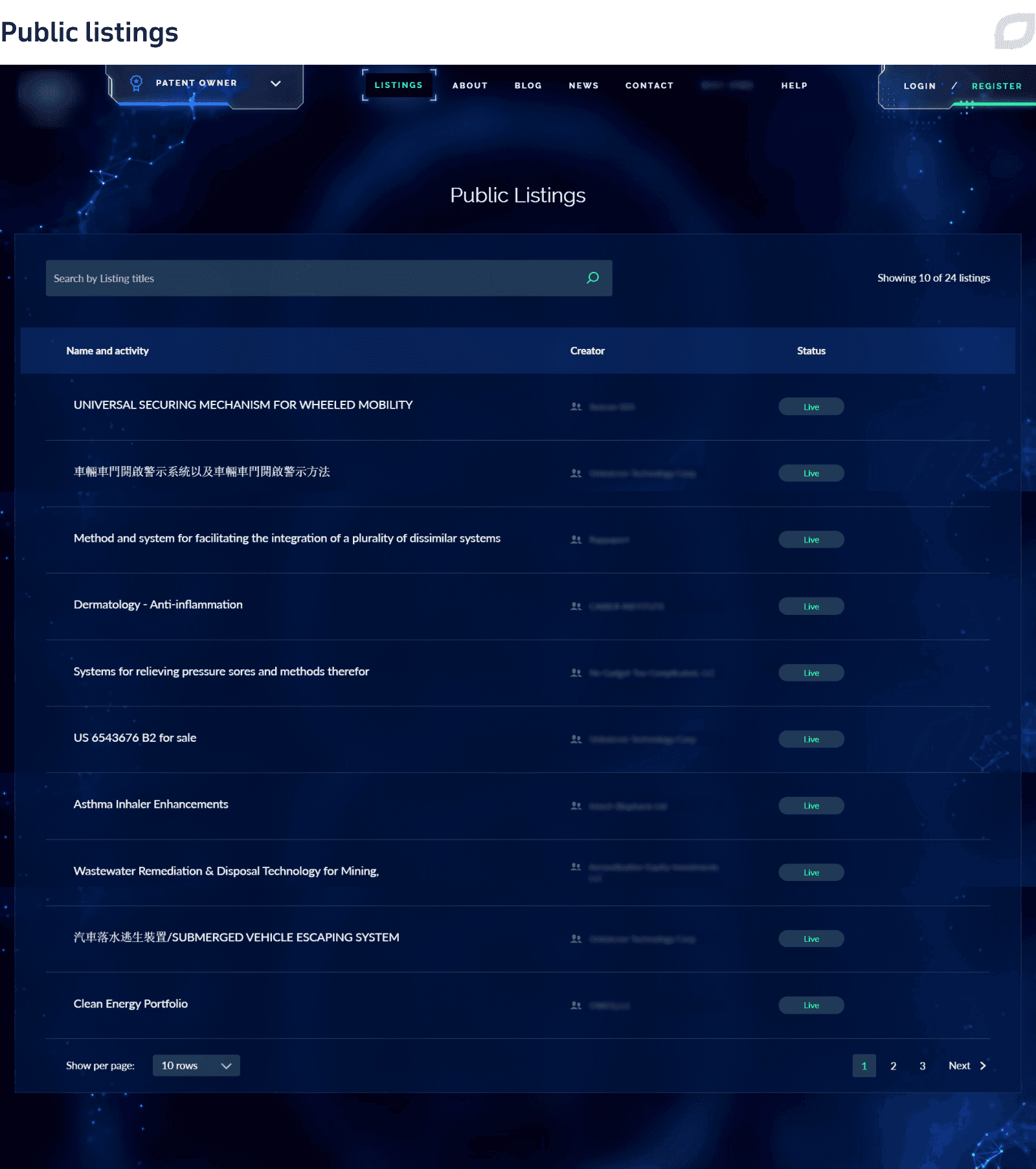
Search is a patent research tool, which requires no login or account. It displays patents available for sale/license and provides patent analytics and scoring. The customer’s AI model helps to understand and analyze key attributes including patent worth, relevance, legality, and technology. Users can search by patent number, company name, technology area, or other keywords.
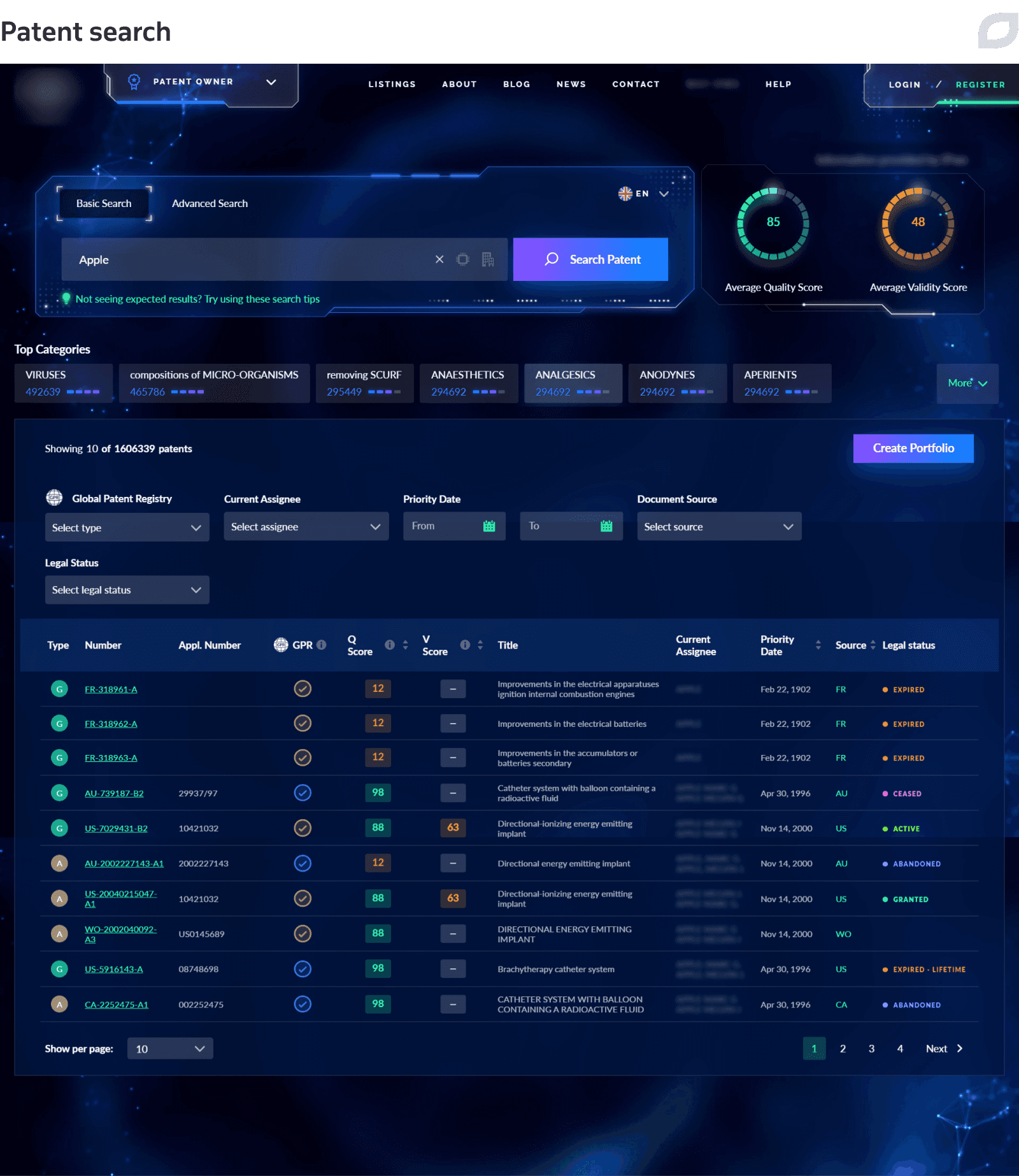
The admin panel
The admin panel is a blockchain-based internal part of the platform, which enables patent owners to sale and license patents. With its help, patent holders can verify patent ownership, manage offers, and pay maintenance fees. All the changes regarding patent ownership are recorded in the blockchain. The system is utilized by both users and admins with different permission levels.
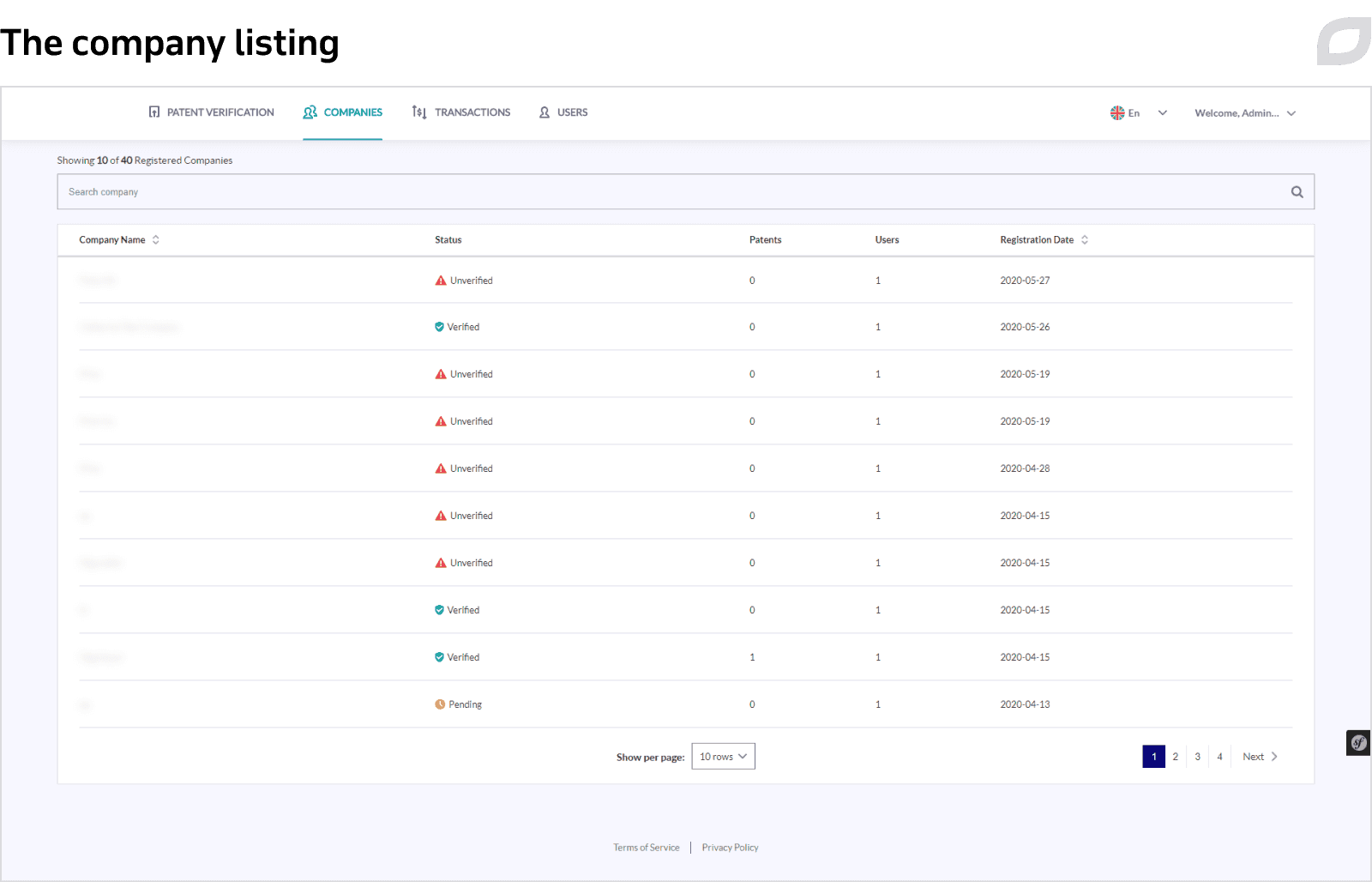
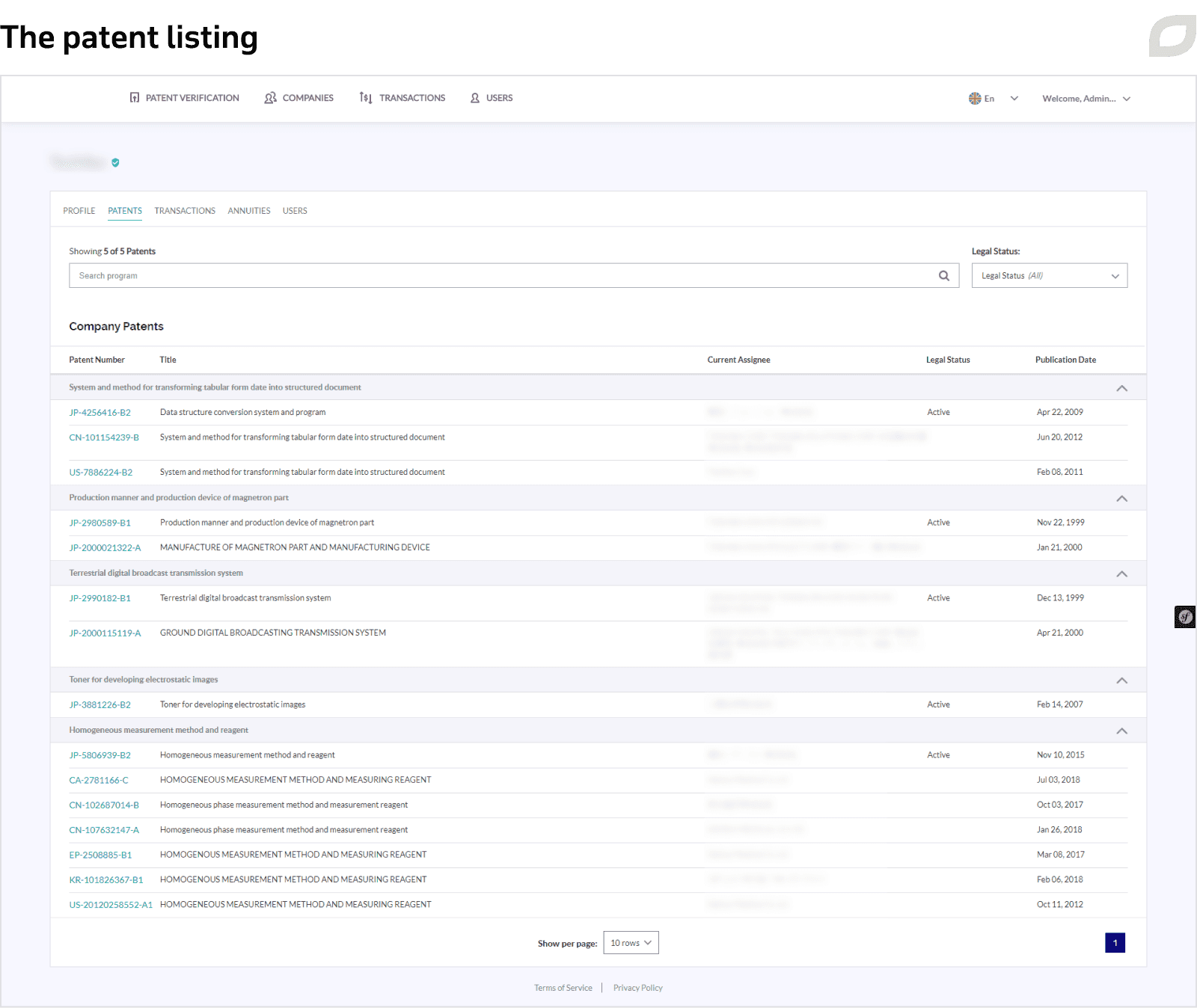
Technologies & tools
The solution’s frontend part was written in JavaScript applying the ES6 standard. We used React libraries for UI, and Redux libraries for application state monitoring. Webpack allowed bundling JavaScript files to use in a browser, while the Babel transcompiler facilitated writing code in the latest version of JavaScript. StyledComponents enabled styling elements and components.
The backend was developed using PHP and Symfony while utilizing PostgreSQL as a database. Redis served as a storage for the application cache and user sessions. We used Elasticsearch as a search engine through the website and deal rooms, whereas Solr enabled searching for patent data on the customer’s side. RabbitMQ was used for asynchronous messaging.
We used Node.js for generation of PDFs, listings, user chats, and API gateway implementation, which allowed proxying user requests to any backend service. Node.js was also used for creating private and public keys. Blockchain codes were written in Go utilizing the Hyperledger Fabric framework.
The solution is deployed in the IBM Cloud. Docker served for containerization purposes with Kubernetes enabling the deployment. Sentry enabled error tracking and New Relic streamlined monitor application performance. For storing user files, we utilized the IBM Cloud Objects Storage capabilities compatible with Amazon S3. As a CI server, we leveraged TeamCity. The PHPUnit and Jest frameworks were utilized for automated Unit and UI testing. Integration with Stripe enabled payment via credit cards and digital wallets.
Process
Having cooperated with the customer for over 10 years, our team was engaged in the analysis of platform requirements, design, development, testing, and support of the system. Currently, we continue expanding the platform functionality.
Teams
There are 3 teams working on the project: the customer’s team, Itransition’s team, and IBM’s team. The customer’s team enhances the user journey in the system and develops services that communicate with the patent database and perform AI-based data analytics.
Itransition’s team develops and tests the marketplace along with the admin panel and the blockchain, including analyzing and documenting requirements of the customer’s product team, designing layouts, and drawing wireframes.
Agile
Considering the fast-changing project requirements, we opted for the Scrumban methodology, which is a combination of Scrum and Kanban. It allowed for more efficient coordination with the customer’s in-house development team and made processes more transparent. We had short two-week iterations with daily meetings and monthly retrospectives.
By setting up CI/CD on the project, we were able to have up to two releases a month, depending on the scope of the implemented features. Later, we stopped practicing by-feature releases and started delivering completed tasks to environments right away, without waiting for other tasks to be completed.
Results
The delivered platform covers a wide spectrum of intellectual property management, with innovative technologies like AI and blockchain at its core. The solution automates complex monetization processes, brings transparency to the IP market, and significantly reduces the costs of patent selling, purchasing, and licensing.

Services
Web portal development services & solutions
Web portal development services to help businesses build user-friendly and secure portals that address the needs of their customers, partners, or employees.

Services
Artificial intelligence services & solutions
Itransition offers full-cycle artificial intelligence services to help companies build and scale powerful AI solutions tailored to their business needs.

Case study
Cryptocurrency exchange platform development
Itransition developed a cryptocurrency exchange platform linking bitcoin exchange accounts to allow users to trade from one web application.